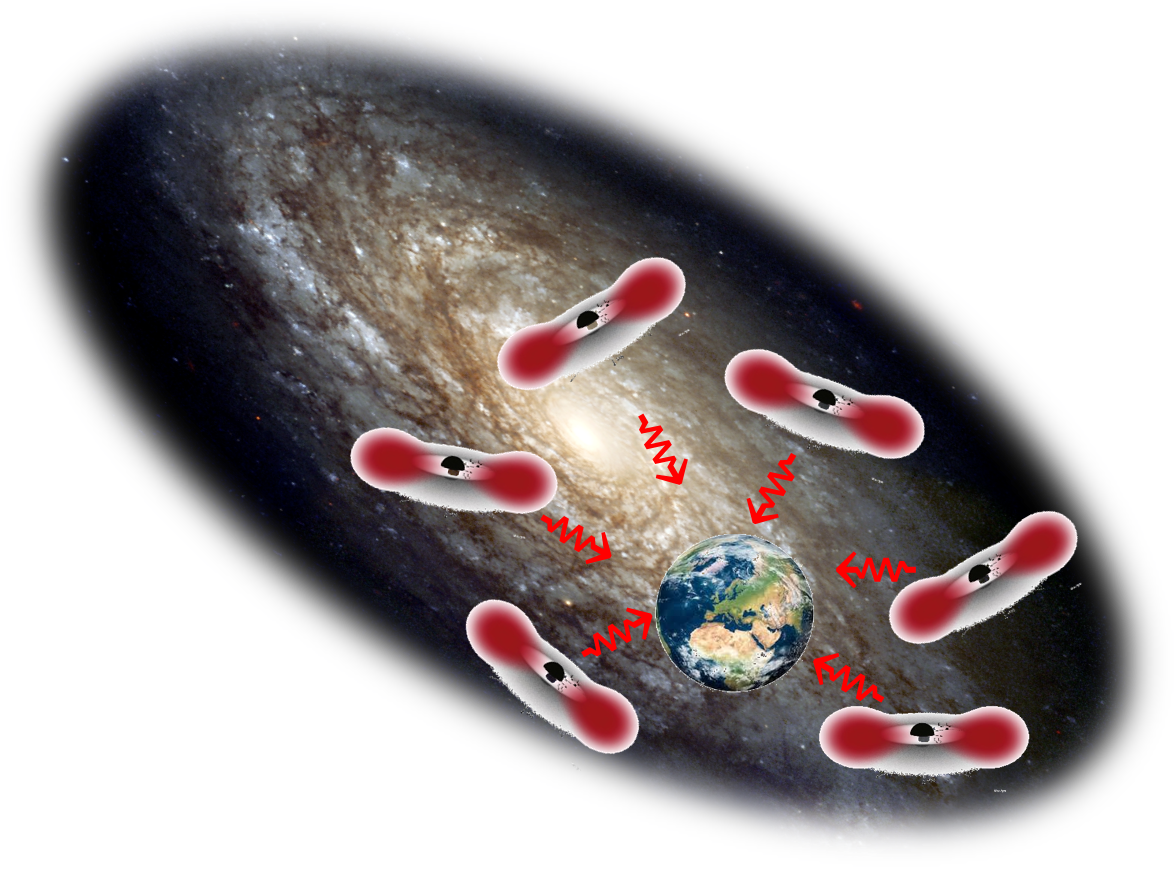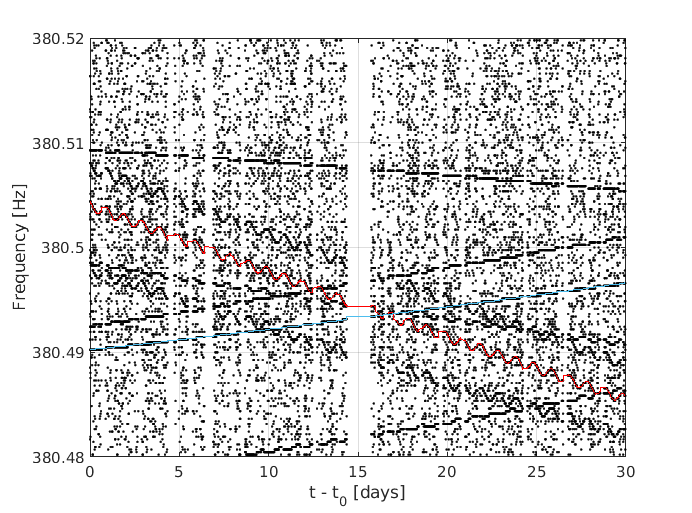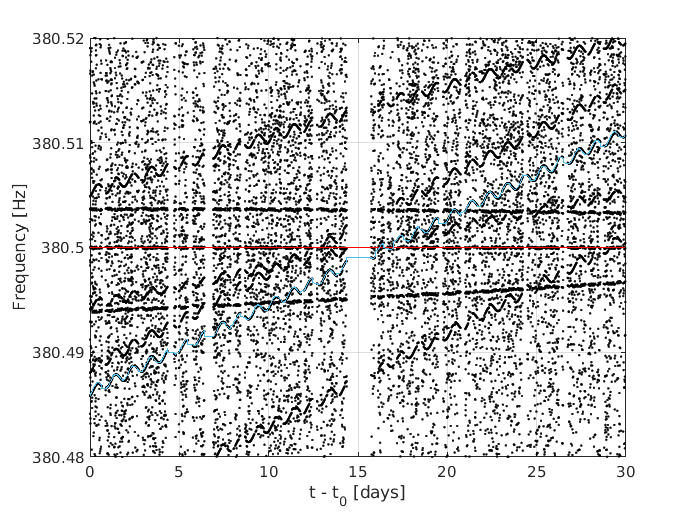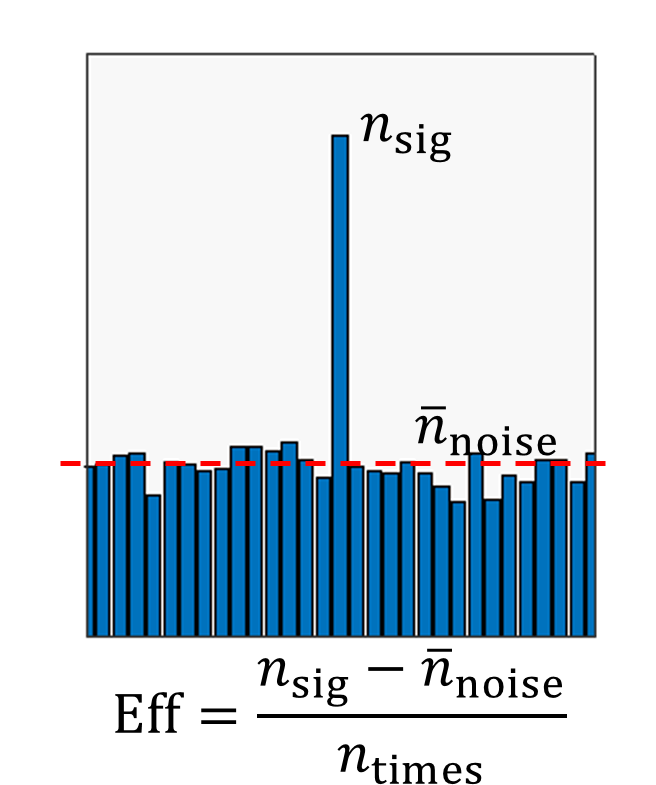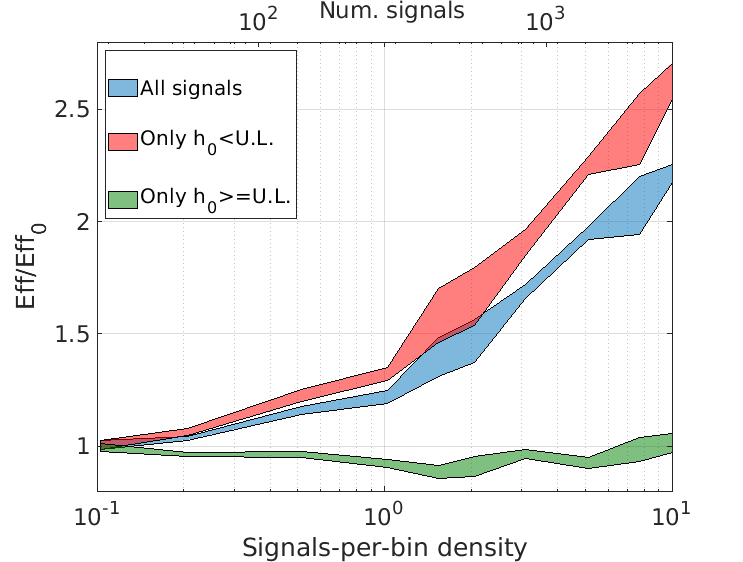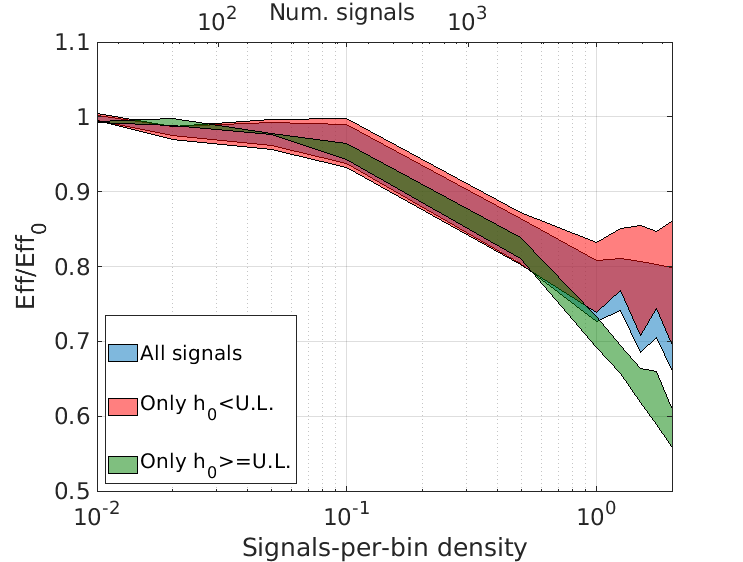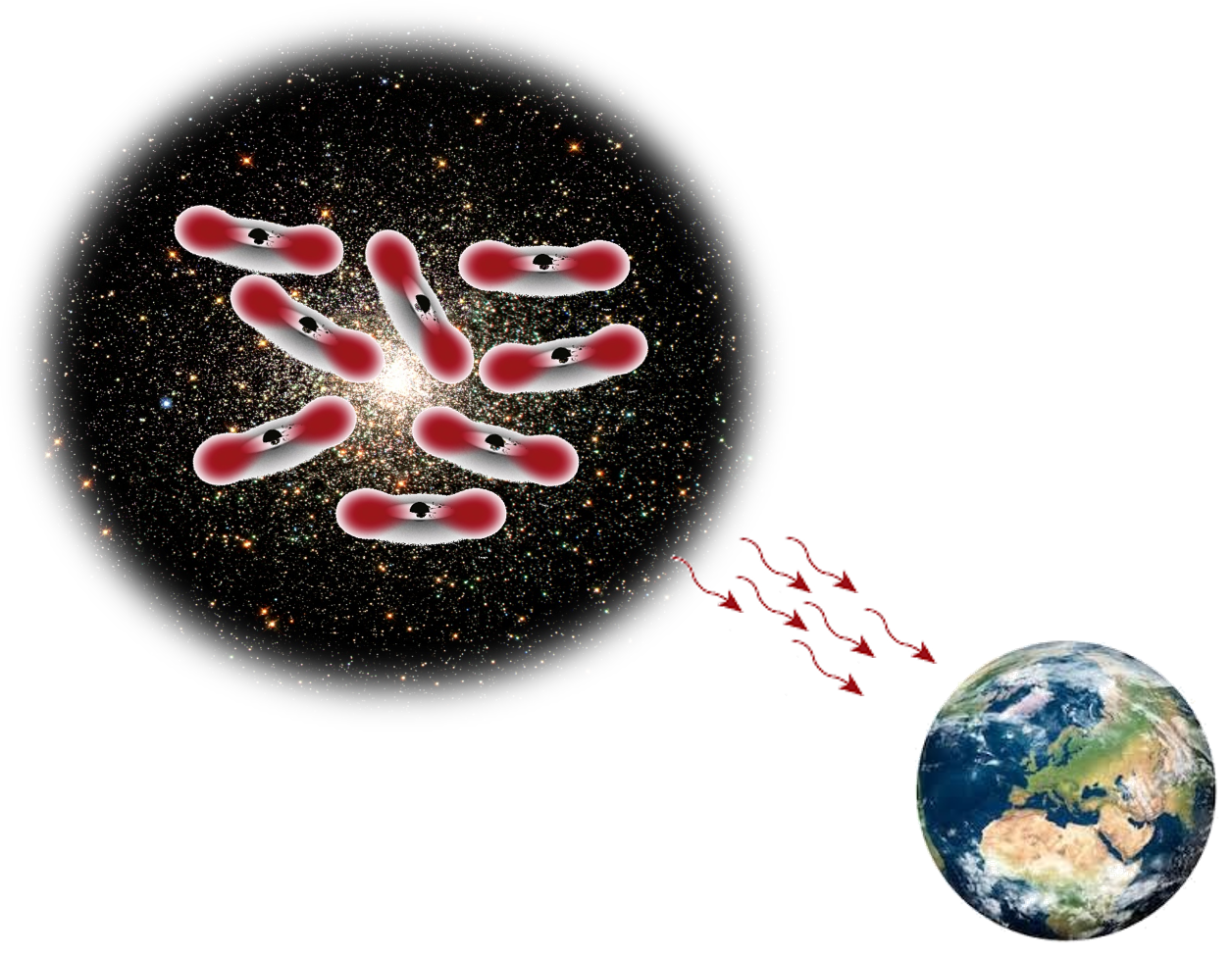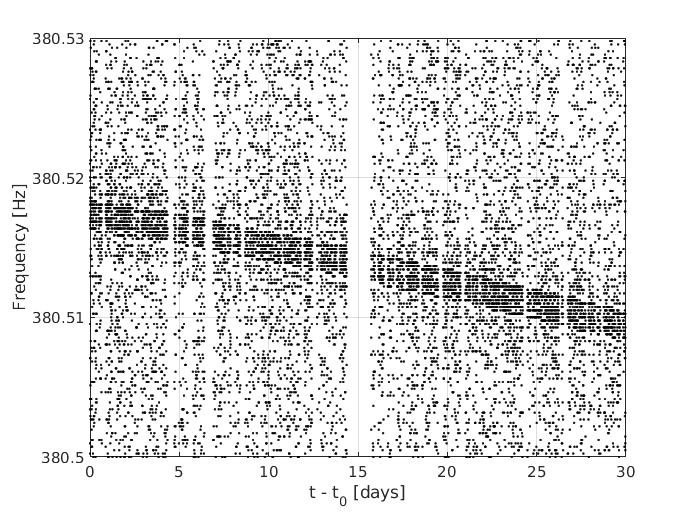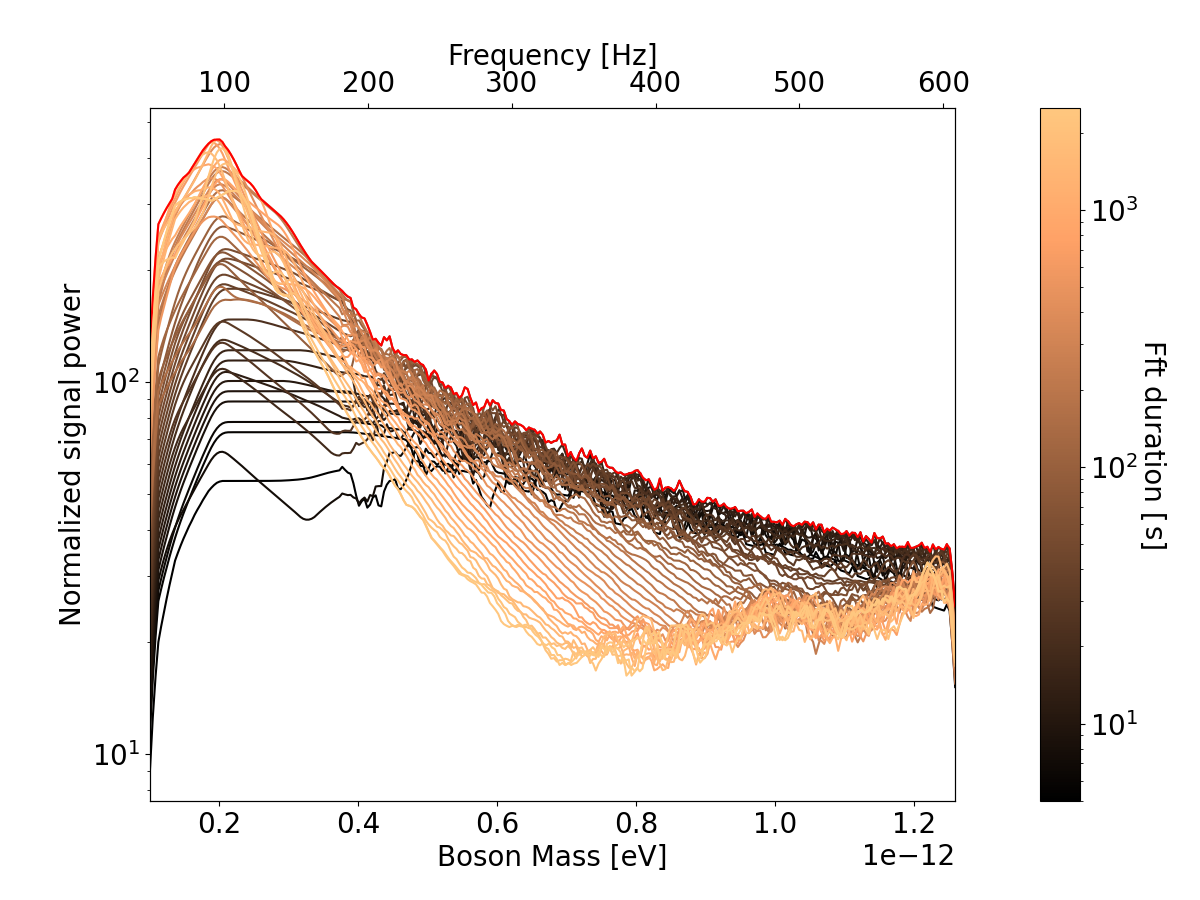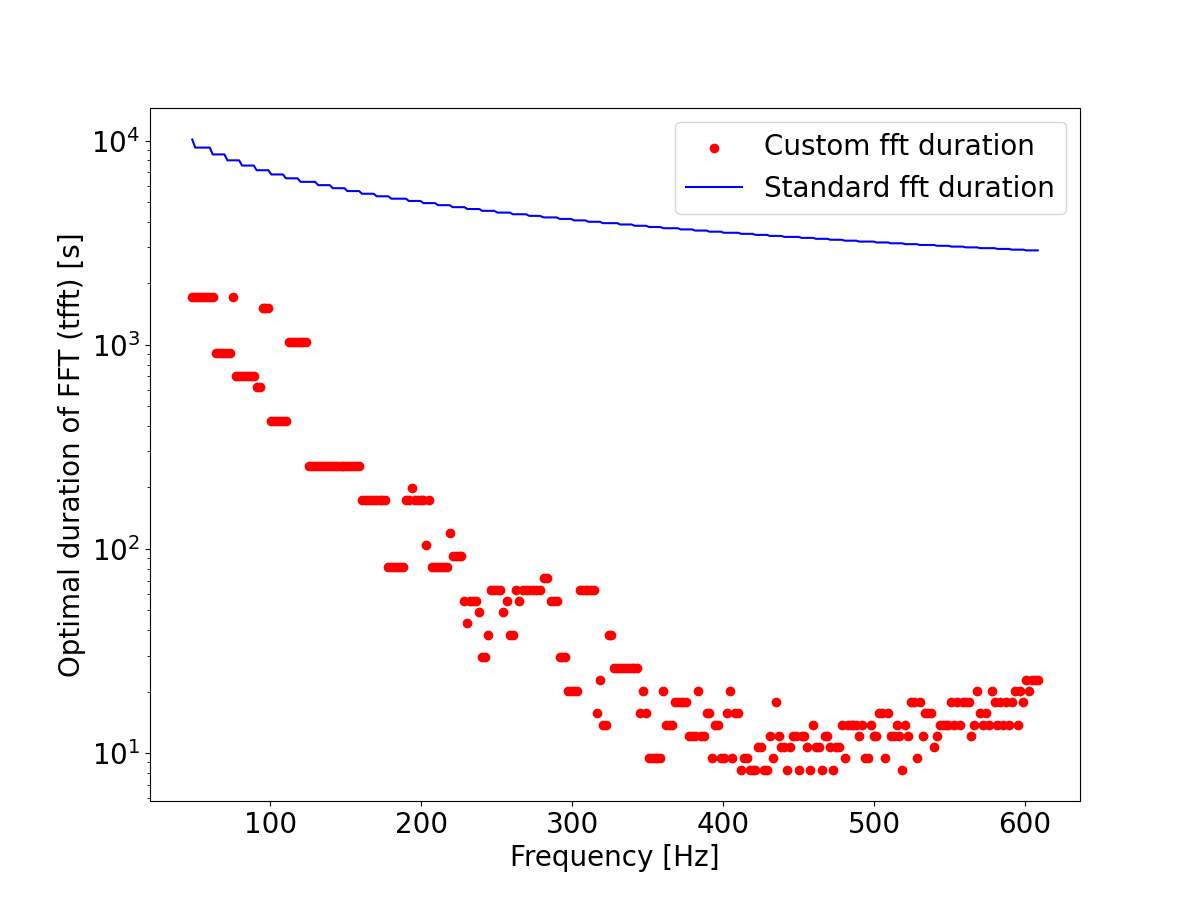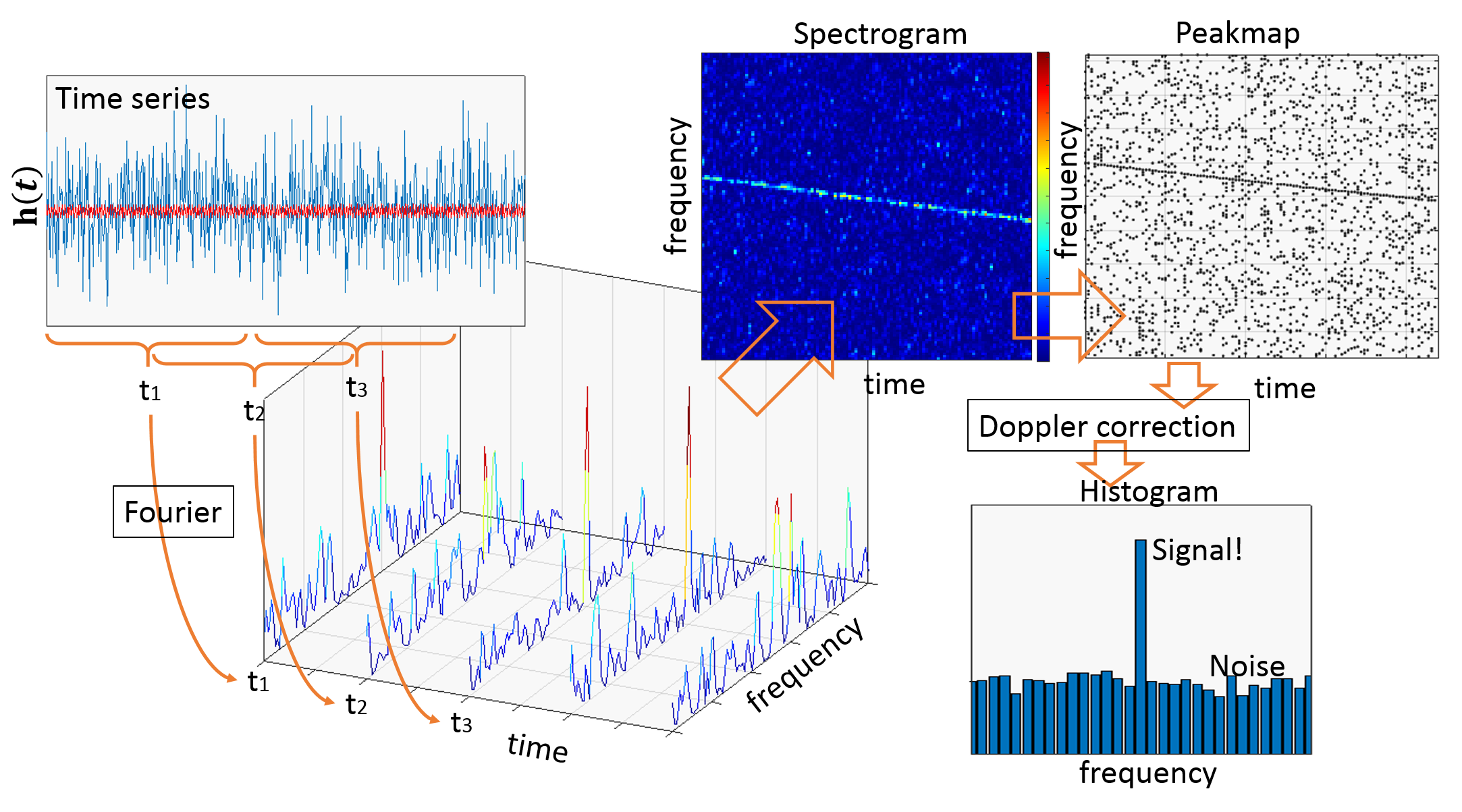Ultralight bosons - like dark photons, QCD axion or axionlike particles - are some of the proposed dark matter candidates. If they exist, they would trigger superradiant instabilitiesround around spinning black holes if their Compton wavelenght is comparable with the black hole size [1]. Under these
conditions, the bosonic field can bind to the BH, forming a “gravitational atom" cloud. After they are formed, these clouds dissipate and emit continuous gravitational waves through boson annihilation into gravitons.
Fine-structure constant of the gravitational atom:
Fundamental quantities:
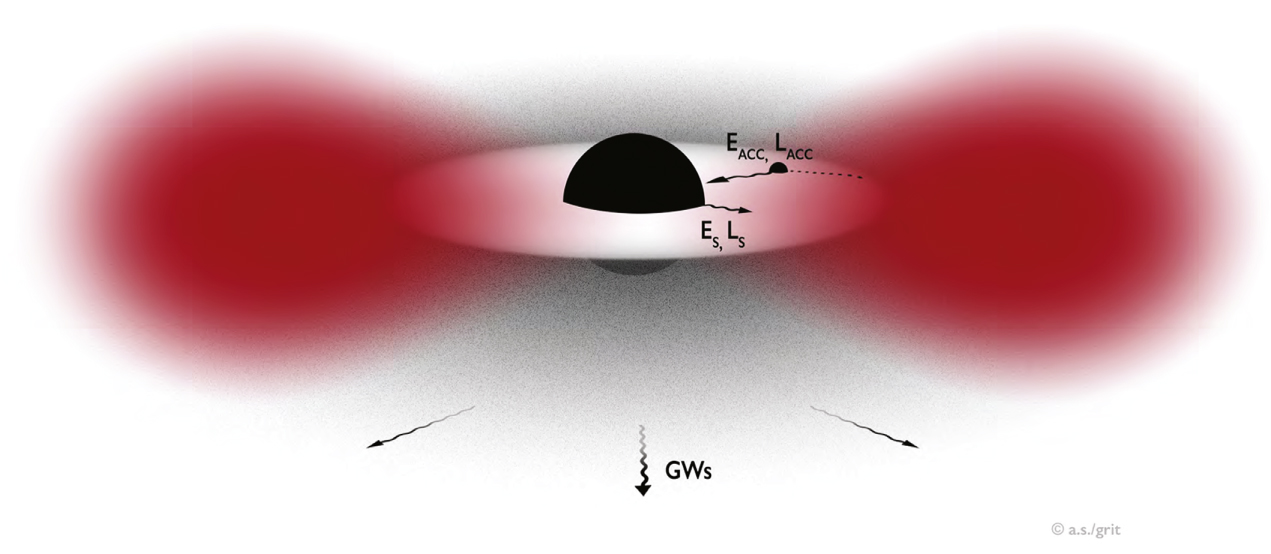
Pictorial description of a bosonic cloud around a spinning BH.
Credits: Brito R. et al (2015) CQG 32(13), 134001.
For scalar bosons, the expected wave has a lifetime ~104 years, with a frequency variation neglibible for the frequency resolution of all-sky searches. So, for our purpouses we can consider them as continuous, monochromatic waves.


